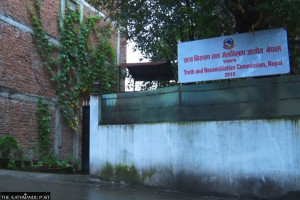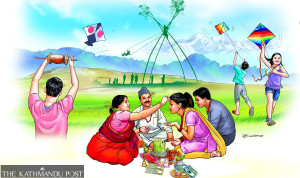Opinion
Facing history with poetry
Greta Rana’s literary writings represent an alternative poetic mode of bonding between Nepal and Britain
The British bond
Still, I was surprised and a little awed when I received an invitation from the Zoological Society of London, known commonly as ZSL, to be the keynote speaker on the evening of a Nepal-Britain friendship meet at a spacious hall on November 24, 2009. Though I was not quite prepared for that kind of meeting, I was struck by the diversity and variety of themes and topics that British and Nepali scholars could find to talk about and create programmes for the future.
In my introduction, I recognised a few appellations—I was a writer, a teacher of English literature, and one who comments on environmental and social issues. I met British people that evening who hailed from so many different backgrounds, and who had done so much work in Nepal as scientists, social workers, economic experts, and even military experts. I met Nepali expatriates and Nepali-born British professor Surya Prasad Subedi who, it seemed, was playing an important role galvanising the diverse energy, which was productive for Nepal. I saw the substance in their activities. People representing Gurkha soldiers, who told me about their activities and their legal battles, were also present there, including their British supporters. I was truly amazed to see how strong and long Nepal-Britain bonding has been.
But despite my long friendship with British-Nepali historians, literary academics, agriculturists, linguists, social workers, former soldiers, and others, I had missed a few things in this order of friendship and association.
I had forgotten some persons and spaces here in Nepal that remind of the Nepal-British association. I mean, British expatriates and residents who have done meaningful, creative, and productive works for centuries. Meeting Greta Rana, a Yorkshire-born writer, made me feel what I had missed in this Nepal-British association in terms of literary writings.
Greta’s works
I had read Greta’s works, especially her translation of Diamond Shumsher Rana’s novel Seto Bagh as The wake of the white tiger, which tells the story of Jung Bahadur Rana’s last days of life in the jungle where a mysterious white tiger leaps upon him. Writers who go to live in culturally and politically alien countries as spouses or in other capacities grapple with the historicity of that space in a few distinct ways. First, they cope with the culture and society as part of adjustment. But the literary works of expatriates, or as postcolonial pundits have made known, reveal methods they develop to cope with the historicity of the land. They face it through indifference, psychological confrontation, or creative adjustments. Greta chose the last.
Reviewing Greta’s fictionalised history, Hidden Women (2012), Rabi Thapa questions, “How does the author retain control of a historical narrative when she complements it with a demi-omniscient, most likely fictional character?” (The Sunday Guardian, November 20). It is this very problem that reveals how an author in Greta’s position faces the history of the adopted land. Greta chose to confront it through the literary medium, which involved some fictional element. She entered no-man’s land by choosing a genre represented by Seto Bagh, which is not history for historians and not a proper novel for literary critics. The history of a family that she entered through marriage was an equally ambivalent contact zone for her, where she encountered a history that was amorphous and shifting. She translated her way into that space, where she created a life pattern. I take it as Greta’s creative methodology and strength. I said as much while launching her collection, So why not sleep? on November 29. My conviction is that Greta Rana has been meeting the history and memories of an alien feudal dynasty that she encountered through a fine poetic conviction and sensibility. The following lines speak volumes.
An alternative mode
In ‘Restless’ she evokes, “Shakespeare who/with the headful of fairies, asses and kings,/might never have slept a full night through/ his labyrinth of fascinating things”.
In her beautiful Houseman-like English poetry, she writes these lines: “flame in the river,/and the fields creeping into day/like ghosts in swirling mists of time” (‘Sunrise of Basant Panchami’). In a Byronian nostalgia expressed in Italy in the lines “oh, to be in England when spring is there!” she sings of a far country, “It will be spring in England soon,/warmth waving through meadows,/ and green rivers of tufted grass” (‘From beyond the moorlands’). But her poetry shifts from ‘Mechi to Mahakali’ in these images, “Maize, packed in sleeves/of wrinkled skin, clinging to its yellow seeds/ swaying on a lofty stalk of empire/ surveying its domain of pumpkin vines.”
Greta Rana’s entry into feudal Nepali men’s and women’s history symbolically represents an alternative poetic mode of bonding between Nepal and Britain that merits attention in the bicentennial programmes announced recently in Kathmandu and London. Nepal-Britain friendship has a literary heritage for many of us, but the actual history spans many eras of experiments and achievements before arriving in today’s republican Nepal.




 22.16°C Kathmandu
22.16°C Kathmandu











